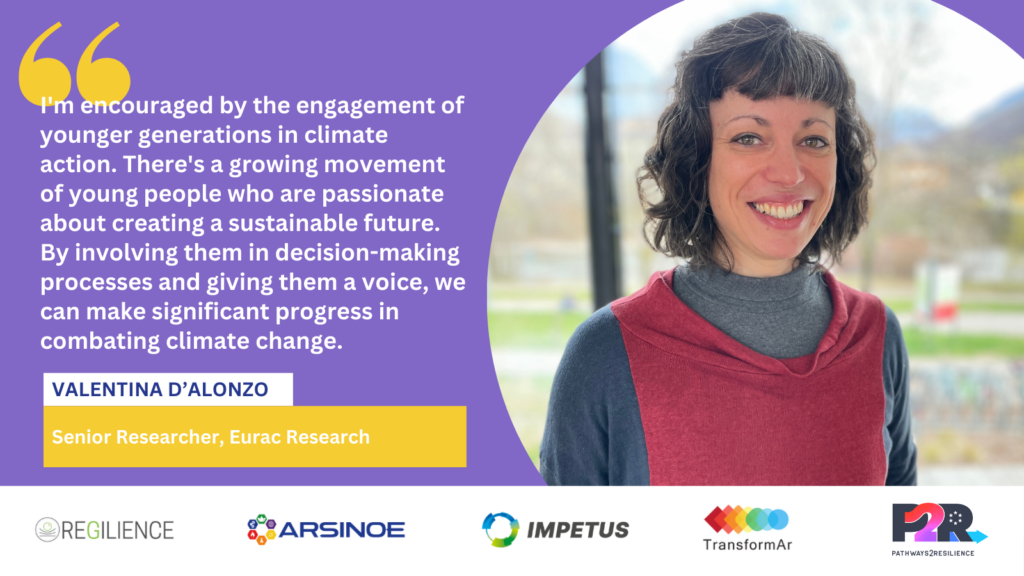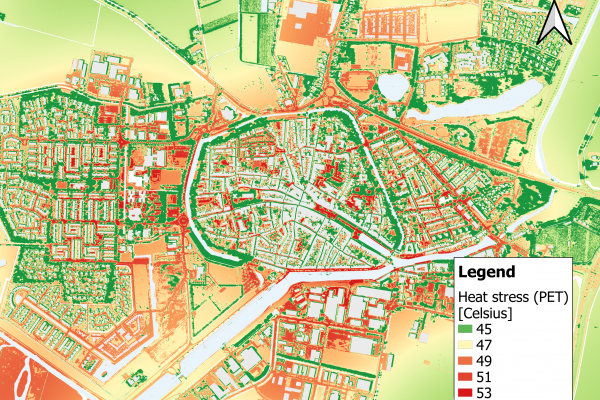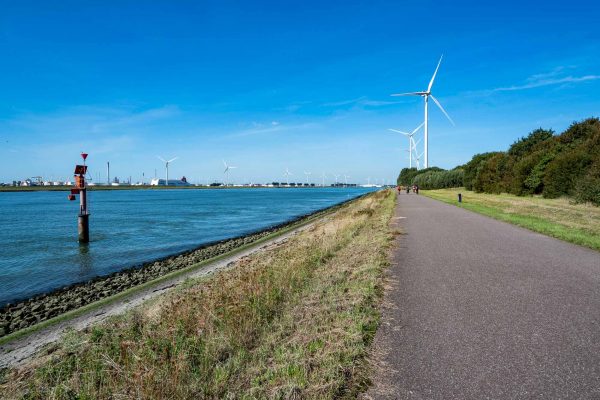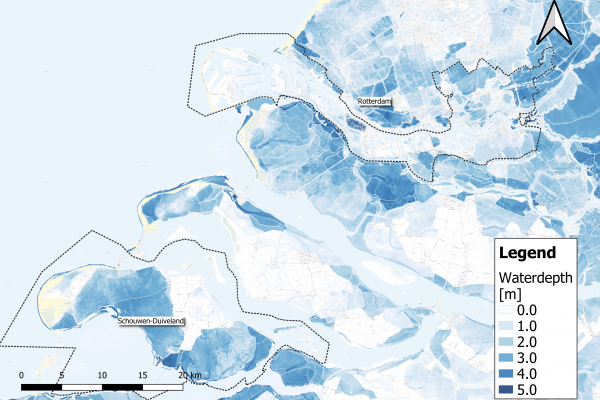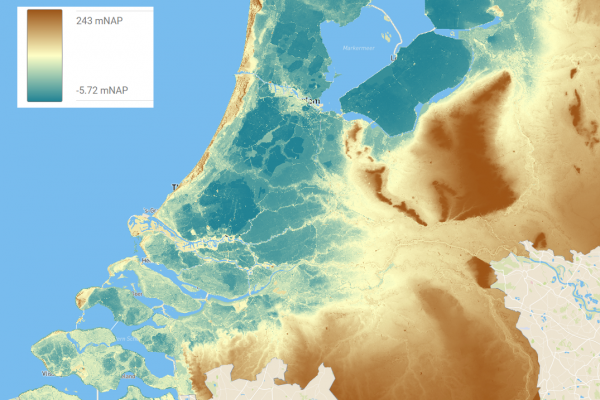The complex challenge of adapting to climate change requires collaboration between many fields of expertise and the diverse approaches of different projects. IMPETUS is working closely with sister climate change adaptation projects ARSINOE, TransformAr and REGILIENCE. Together, these involve many inspiring people whose skills and experience contribute in various ways to creating resilience and adaptation tools, solutions and initiatives.
To mark International Women’s Day – 8 March – we have been interviewing some of the impactful women in our projects. For IMPETUS, we spoke with Mountains demo site leader – Valentina D’Alonzo, a senior researcher at Eurac Research’s Institute for Renewable Energy (below) and Agnese Meija – Toropova from Baltic Environmental Forum Latvia working in the Boreal demosite (next article).
Valentina, can you tell us about your role at Eurac and what motivated you to work in the renewable energy sector?
Certainly. I’m a senior researcher at Eurac’s Institute for Renewable Energy. My interest in energy and climate topics began during my master’s degree and master’s thesis, where I focused on integrating mitigation and adaptation actions into spatial planning processes. This interest led me to pursue opportunities at Eurac, where I primarily work on sustainable energy transition projects.
How do you apply your expertise in spatial planning to projects like IMPETUS?
Spatial planning involves managing territories and incorporating various disciplines to address environmental and economic impacts. In Impetus, I have a management role, overseeing people and activities for our demo site in Italy. While I’m not directly involved in specific topics, I leverage my ability to connect different perspectives and keep activities aligned.
Have you faced any challenges in your career, particularly regarding gender balance in your field?
Gender balance is still an issue, especially in management positions. While the research field is relatively balanced, management roles often skew toward men. Personally, I’ve encountered challenges working with older men on certain projects, but I’ve found support from family, colleagues, and mentors.
What advice would you give to young women aspiring to work in climate adaptation or energy research?
Persevere and seek support. It’s crucial to be passionate about the topic you’re working on and to surround yourself with people who believe in you. Don’t let gender stereotypes hold you back, and remember that your voice matters in shaping the future of our planet.
What do you see as the biggest challenge Europe faces in adapting to climate change?
The biggest challenge is integrating adaptation measures across all sectors of society and the economy. We need to move beyond working in silos and foster communication and collaboration among different disciplines and sectors.
Is there anything that makes you hopeful for the future, particularly in addressing climate change?
Absolutely. I’m encouraged by the engagement of younger generations in climate action. There’s a growing movement of young people who are passionate about creating a sustainable future. By involving them in decision-making processes and giving them a voice, we can make significant progress in combating climate change.
Any final thoughts on gender balance in science and the future of climate research?
I hope for a future where celebrating women in science isn’t necessary because gender balance is the norm. We have work to do to achieve this, but with continued effort and collaboration, we can create a more inclusive and impactful scientific community.
